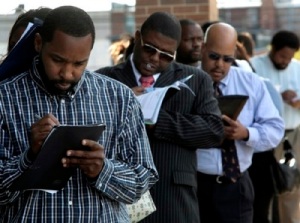
Media headlines of late are challenging our presumptions about what is invisible labor.
Amazon, for instance, announced the opening of a store that eliminates the frontline job of cashiers – as well as the checkout lane and all the self-checkout machines. Instead, this work will be done through the automatic scanning of consumer movements around the store and on the shelves. Live employment will be diverted to locations behind the scenes, in labors of preparing and stocking the food.
Likewise, in my home state of Missouri, a waitress at Hooters was fired for failing to do the work of looking right on the job. That labor involved wearing a wig (bought at her own expense) to cover scar on her head after returning from brain surgery, and thus upholding gendered and sexualized appearance rules at work.
Even acts of resistance on the job are telling, like when an African-American employee broke a stained-glass window in the Yale dining hall where he washed dishes. Outraged by a scene depicting slaves picking cotton, he was no longer willing to do the work of idly supporting in a discriminatory organizational environment.
Automation, aesthetic labor, and racial tasks are examples of contemporary ways that the workplace is disempowering workers and submerging the types of tasks they are expected to do. This is the starting point of a new book I co-edited with two legal scholars, Marion Crain and Miriam Cherry.






